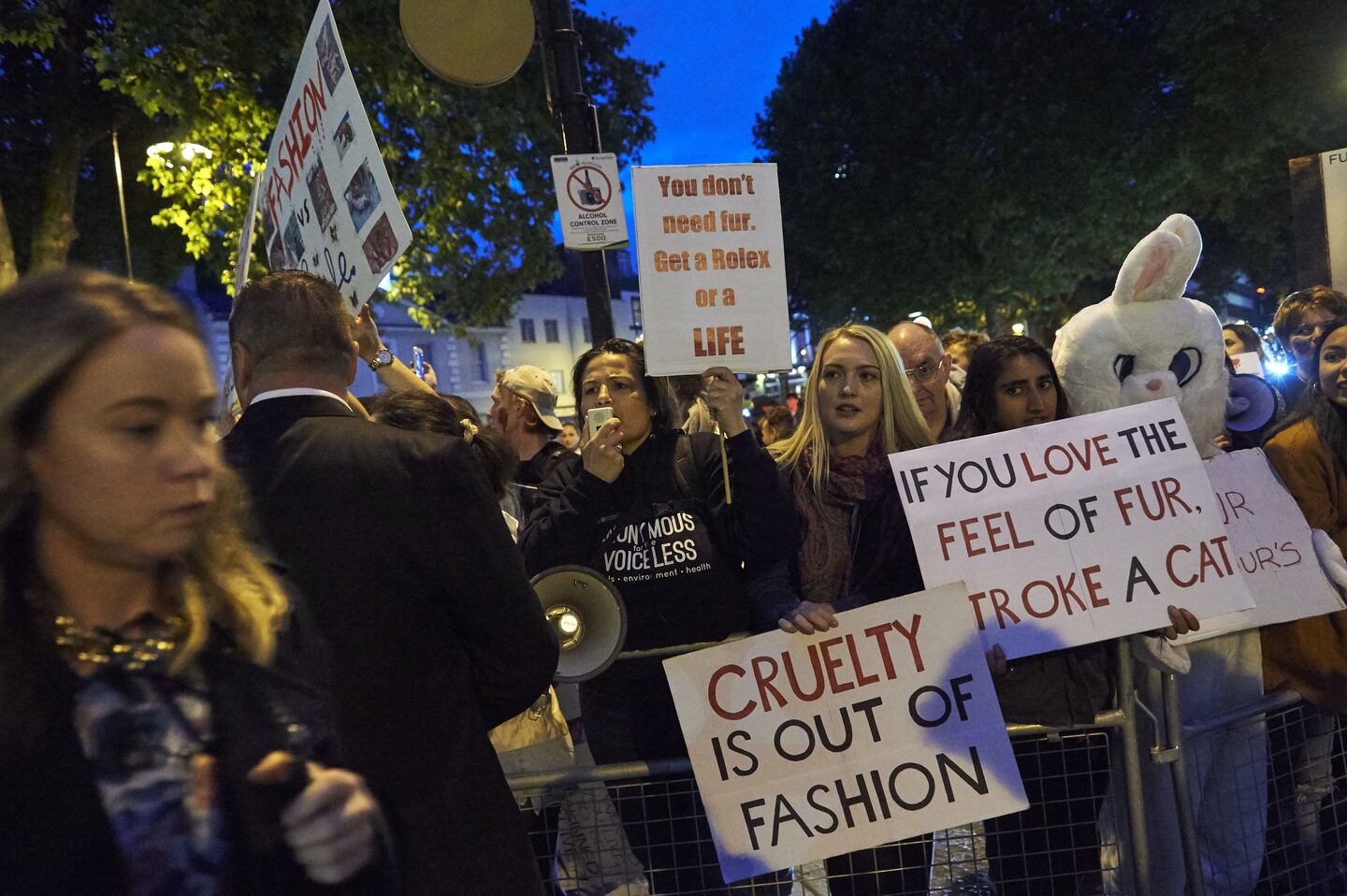
The Business of Fashion
Agenda-setting intelligence, analysis and advice for the global fashion community.

Agenda-setting intelligence, analysis and advice for the global fashion community.

LONDON, United Kingdom — Just before 7pm on Saturday evening, editors, buyers and celebrity guests were pulling up outside the Old Sessions House in London's Clerkenwell for Burberry's latest show. But instead of the usual cluster of paparazzi and street style photographers, attendees were met by some 250 anti-fur protestors.
Activists — covered in fake blood — shouted and spat at guests, while billboards and projectors showed tortured animals. Police had created a human wall past which guests were ushered in small groups. Others entered the venue through a back entrance. The protestors had arrived at the venue hours earlier after demonstrating at the 4pm Gareth Pugh show across town on the Southbank.
"Our petition against [the British Fashion Council] currently has over 200,000 signatures and our campaign video has surpassed 1 million views. It is time for the British Fashion Council to listen to what we're saying," said Ed Winters, co-founder of vegan activist group Surge, who is demanding that the BFC ban fur at London Fashion Week.
Yvonne Taylor, director of corporate projects for PETA, acknowledges that "most designers don't work with fur, and certainly the majority of consumers don't wear it," but insists that the protests are still necessary. "Animals suffer all year round, and although we take into consideration seasons and trends, it's important to remind people year-round that wearing the skin of tormented animals should never be in fashion," she says. "Often, we stage demos around official fashion week venues to raise awareness of issues in which we can all make a difference."
ADVERTISEMENT
YNAP and Selfridges declined to comment on the protests, though a no-fur policy is a part of their respective ethical and sustainability programmes. When announcing YNAP's anti-fur policy, Matteo James Moroni, head of sustainability at YNAP said in a statement. "Our goal is to act as an industry-wide catalyst for change."
Caroline Rush, chief executive of the British Fashion Council did not respond to Winters' demands to drop fur from LFW: "The British Fashion Council does not dictate what designers can or cannot design and has no control over their creative process,"she tells BoF. "We encourage designers to ensure that if they choose to work with fur, they work with reputable organisations that supply ethically sourced fur." She did highlight the BFC's responsibility when it comes to safety. "We are lucky enough to live in a diverse capital which has freedom of speech and choice," she says. "Protests are a part of that. London Fashion Week is a fantastic promotional platform and protesters see this as an opportunity to raise awareness of their cause. It is the BFC's duty and priority to ensure the event runs safely and smoothly, and to guarantee the safety of our designers and guests… the team has worked hard with security and the police to ensure that this happens."
Related Articles:
[ Inside the Growing Global Fur IndustryOpens in new window ]
From analysis of the global fashion and beauty industries to career and personal advice, BoF’s founder and CEO, Imran Amed, will be answering your questions on Sunday, February 18, 2024 during London Fashion Week.
The State of Fashion 2024 breaks down the 10 themes that will define the industry in the year ahead.
Imran Amed reviews the most important fashion stories of the year and shares his predictions on what this means for the industry in 2024.
After three days of inspiring talks, guests closed out BoF’s gathering for big thinkers with a black tie gala followed by an intimate performance from Rita Ora — guest starring Billy Porter.